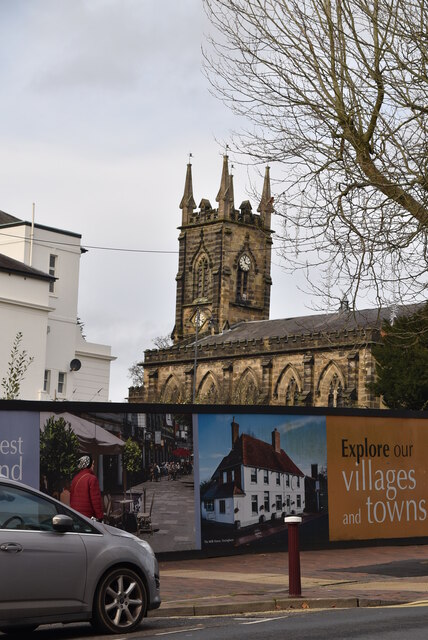TQ5839 : Trinity Arts Centre
taken 3 years ago, near to Royal Tunbridge Wells, Kent, England

Originally Trinity Church, built by Decimus Burton as part of the Georgian New town of Tunbridge Wells. The church was de-commissioned in 1975. The Arts centre opened in 1983 and since then has grown in size.
Grade II* listed. Link
Website Link
Listed buildings and structures are officially designated as being of special architectural, historical or cultural significance. There are over half a million listed structures in the United Kingdom, covered by around 375,000 listings.
Listed status is more commonly associated with buildings or groups of buildings, however it can cover many other structures, including bridges, headstones, steps, ponds, monuments, walls, phone boxes, wrecks, parks, and heritage sites, and in more recent times a road crossing (Abbey Road) and graffiti art (Banksy 'Spy-booth') have been included.
In England and Wales there are three main listing designations;
Grade I (2.5%) - exceptional interest, sometimes considered to be internationally important.
Grade II* (5.5%) - particularly important buildings of more than special interest.
Grade II (92%) - nationally important and of special interest.
There are also locally listed structures (at the discretion of local authorities) using A, B and C designations.
In Scotland three classifications are also used but the criteria are different. There are around 47,500 Listed buildings.
Category A (8%)- generally equivalent to Grade I and II* in England and Wales
Category B (51%)- this appears generally to cover the ground of Grade II, recognising national importance.
Category C (41%)- buildings of local importance, probably with some overlap with English Grade II.
In Northern Ireland the criteria are similar to Scotland, but the classifications are:
Grade A (2.3%)
Grade B+ (4.7%)
Grade B (93%)
Read more at Wikipedia Link
Born 30 September 1800, died 14 December 1881 he was an architect and garden designer, particularly associated with projects in the classical style in London parks, including buildings at the Royal Botanic Gardens, Kew and London Zoo. He also designed the layout and architecture of the seaside towns of Fleetwood and St Leonards-on-Sea. He also designed many parts of Royal Tunbridge Wells (Calverley New Town). His first name, Latin for 'tenth', denoted his position as the tenth child in his large family. He retired in the 1860s and is buried in Kensal Green Cemetery.
